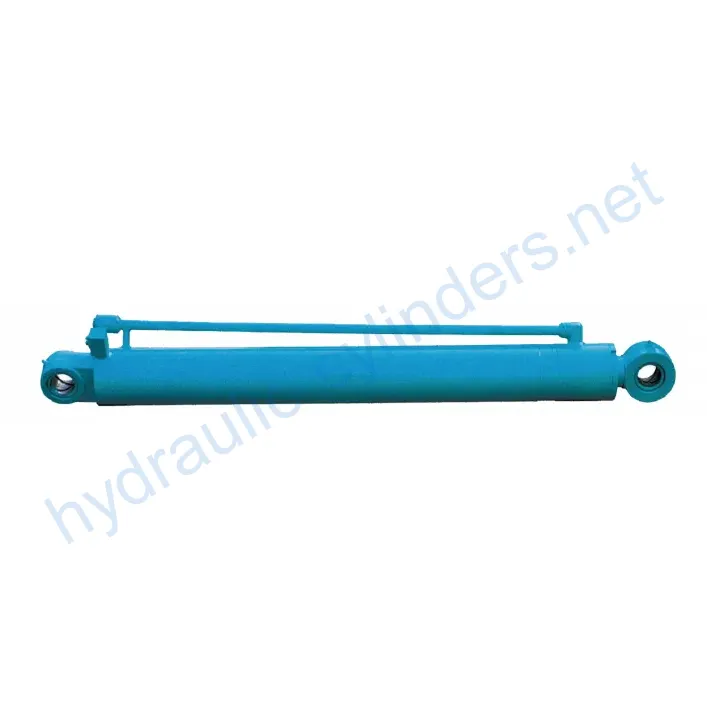Arm Cylinder For XGMA Small Excavator XG808
Introduction
The arm cylinder is a specially designed hydraulic cylinder that provides linear motion and power to the arm of various machinery such as excavators, cranes, and robotic arms. It plays a crucial role in hydraulic systems, enabling the efficient movement and control of additional tools or attachments. These cylinders not only achieve smooth motion but also withstand heavy loads, ensuring high efficiency and reliability of the machinery under various operating conditions.
Features
-
High Efficiency Transmission
The arm cylinder provides powerful linear motion and force, ensuring efficient performance of the mechanical arm in various operations.
-
Precision Control
Through the hydraulic system, the arm cylinder enables precise motion control, making the operation of additional tools more flexible and accurate.
-
Strong Durability
The arm cylinder is typically made of high-strength materials, offering excellent wear resistance and corrosion resistance, making it suitable for long-term use in harsh environments.
-
Versatile Adaptability
These cylinders can be widely applied to various mechanical equipment, such as excavators, cranes, and robotic arms, adapting to different job requirements.
-
Easy Maintenance
Designed for easy maintenance and replacement, the arm cylinder facilitates convenient periodic inspections and maintenance, reducing equipment downtime.
Applications
The arm cylinder finds applications in different industries:
-
Construction Engineering
In excavators and cranes, the arm cylinder controls the movement of buckets or booms for earthmoving, material handling, and structural installation.
-
Manufacturing
In automated production lines, the arm cylinder enables the movement of robotic arms for assembly, welding, and material handling processes, improving production efficiency and accuracy.
-
Agricultural Machinery
In agricultural machinery such as harvesters and planters, the arm cylinder controls the movement of operating arms for tasks like seeding, fertilizing, and harvesting.
-
Mining
In mining equipment, the arm cylinder controls the arm movement of mining machinery for ore extraction and transportation.
-
Logistics and Transportation
In forklifts and handling robots, the arm cylinder controls the lifting and movement of forks, enabling material handling and stacking.
Design Considerations and Selection Criteria
When designing the arm cylinder, several factors need to be considered:
-
Load-Bearing Capacity
The arm cylinder should be able to withstand the maximum expected load during operation.
-
Sealing
Various sealing components, such as piston seals and rod seals, should be used. These seals should be made of wear-resistant materials like polyurethane and nitrile rubber. The cylinder body and threaded ends should undergo fine treatment to improve wear resistance. Regular lubrication with the appropriate amount of hydraulic oil is necessary.
-
Durability
The arm cylinder should be made of materials with high durability to ensure long-term performance in demanding working environments.
-
Safety
It is important to ensure the safety of the arm cylinder’s operation, including measures such as pressure relief valves, overload protection, and proper installation.
-
Maintenance
The arm cylinder design should facilitate easy maintenance and repair to minimize downtime and ensure smooth operation.
Regular Inspection and Preventive Maintenance
To ensure optimal performance and longevity of the arm cylinder, the following measures should be taken:
- Regularly inspect the cylinder for any signs of wear, leakage, or damage.
- Check and replace seals and other components as needed.
- Maintain proper lubrication by adding the recommended amount of hydraulic oil.
- Keep the cylinder clean and free from debris or contaminants.
- Follow the manufacturer’s guidelines for maintenance intervals and procedures.
Installation Guide
Proper installation of the arm cylinder is crucial for its functionality and safety. Follow these steps:
- Ensure the excavator or machinery is turned off and all hydraulic pressure is released.
- Position the arm cylinder in the correct location, aligning the mounting holes.
- Securely fasten the cylinder using appropriate bolts and nuts.
- Connect the hydraulic hoses to the cylinder, following the designated ports.
- Test the cylinder for proper operation before resuming work.
Safety Considerations and Environmental Factors
When using the arm cylinder, it is essential to prioritize safety measures to prevent accidents and protect personnel. Safety precautions include:
- Follow all safety guidelines and instructions provided by the manufacturer.
- Ensure proper training and certification for anyone operating or maintaining the machinery.
- Regularly inspect the cylinder and hydraulic system for any signs of damage or malfunction.
- Provide adequate protective equipment, such as gloves and goggles, when working with the cylinder.
Troubleshooting and Common Issues
When encountering problems with the arm cylinder, consider the following troubleshooting steps:
- Check for any visible leaks or damage to the cylinder or hydraulic hoses.
- Inspect the hydraulic fluid level and quality, and replenish or replace if necessary.
- Ensure all hydraulic connections are secure and properly tightened.
- Verify that the pressure relief valve is functioning correctly.
- Refer to the manufacturer’s troubleshooting guide or contact their customer support for further assistance.
By following these troubleshooting tips and providing preventive measures, readers can effectively diagnose and resolve issues while minimizing potential problems.
About Us
We are a professional manufacturer of replacement hydraulic cylinders, offering a wide range of products. We have become one of the leading hydraulic cylinder manufacturers and wholesale distributors in both domestic and international markets. With a commitment to excellence, we continuously improve our technical expertise and production efficiency through advanced manufacturing facilities and professional testing systems. Our innovative capabilities are enhanced by the use of high-end digital manufacturing equipment. We prioritize efficiency, precision, and high-quality products to meet the diverse needs of our customers.
Author: lyl

